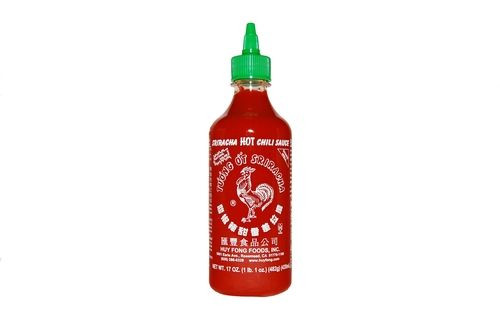Why Sriracha Tastes So Painfully Good

America’s new ketchup — Sriracha — has been part of a love affair between us and food. The spicy, garlicky, and slightly sweet taste of the hot sauce has made it one of the most universally adored condiments used on everything from burgers to Bloody Marys. Now, what sets Sriracha apart from all the other hot sauces out there? The American Chemical Society's (ACS) most recent YouTube video suggests it’s all in the burning sensation.
Manufactured by Huy Fong Foods Inc., the famous hot sauce known for its rooster logo and bright red color consists of fresh red chilis, vinegar, garlic, salt, and sugar. These ingredients are responsible for triggering the hot, burning sensation in our bodies. Sriracha comes in at 1,000-2,5000 SHU on the Scoville scale, a measure of spicy foods, according to the ACS video. To compare, Tabasco sauce is 2,500-5,000 SHU, while a habanero pepper is 350,000 SHU.
The first ingredient, red chilis, contains molecules known as capsinoids — capsaicin and dihydrocapsaicin — which trigger the TRPV1 protein in our mouths that responds to temperatures above 109 degrees Fahrenheit in spicy foods. The activation of this protein on peripheral neurons produces a burning sensation, but it can also be found in the central nervous system. Our bodies respond to the burn by releasing natural opiates, or pain-killing endorphins, which have the ability to transform hot sauce from pain to pleasure.
These endorphins not only act as an analgesic, but they also promote a feeling of well-being, says Psychology Today. The body naturally deadens the pain and then gives a natural shot of pleasure as it triggers the brain to release the feel-good chemicals. This explains how we acclimate when we douse everything in Sriracha, which begs the question: Could hot sauce be a masochist’s meal?



























